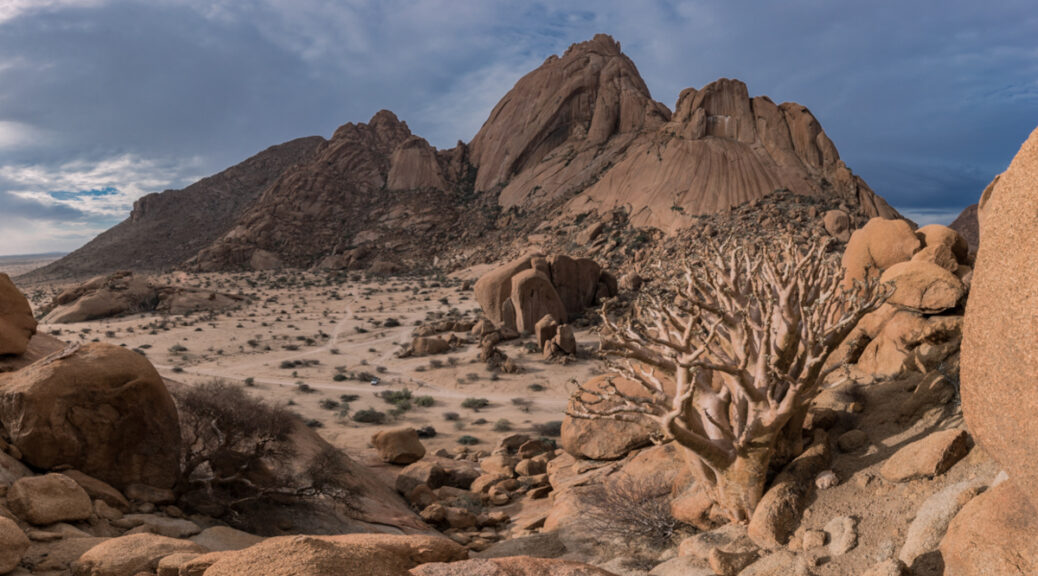With its fascinating rock formations, Spitzkoppe is a photographer’s playground. By Jandré Germishuizen
Since the start of my life as a photographic tour guide, I have made a definitive list of some of my favourite places to visit within Namibia. For me, the astounding Spitzkoppe mountain range comes a close second to Sossusvlei.
Also read: How to photograph Sossusvlei
I continue to be blown away by the diversity of this mountainous landscape as well as the scale and beauty of its magnificent granite peaks. Spitzkoppe offers numerous photographic opportunities with astrophotography being a key point of interest.
An added bonus is the close proximity to the coastal town of Swakopmund, my current hometown. This makes Spitzkoppe the perfect spot for a weekend of camping and photography. There are 29 campsites located around the ‘Matterhorn of Namibia’ as well as a luxury lodge on the property.
What to expect at Spitzkoppe
The landscape lends itself to various scenic views and photographic compositions. Around the peaks, you’ll find scattered acacia scrub and a range of granite boulders and outcrops. In the past, the rocks were mined for semi-precious minerals like tourmaline, aquamarine, topaz and smoky quartz
Although Spitzkoppe is famous for its landscapes, the wildlife should not be overlooked. The area is home to a number of animals including rock hyrax, springbok, zebra and even the ever-elusive leopard. Keep an eye out for more than 20 species of bird, in particular the rare Herero chat. This bird occurs within a specific microhabitat: bands of somewhat lusher woodland around the base of rocky slopes at the edge of the Namib Desert.
During a particularly memorable visit to Spitzkoppe, I was able to experience a once in a lifetime sighting of a leopard hidden amongst the rock formations. Animals in this desolate area are highly unhabituated, making photo opportunities all the more challenging. That said, the rarity of the image makes it far more rewarding. No matter how small a chance exists for these sightings, it’s always important to have your camera ready for shooting.

Photo strategies for Spitzkoppe
For arresting photographs of Spitzkoppe, try out these strategies to lift your photographs from the everyday to the exceptional.
Get some distance
The Spitzkoppe range is not easily photographed within one frame. When you take a step back – a distance of roughly 20km, to be fair – the beauty of this rocky outcrop reveals itself. Make sure to shoot this as a panorama and with as long a lens as you can (to help compress the image). A top tip for any panoramic image is to ensure that your tripod is completely level.

Stop and take it in
This image is representative of why I feel drawn to Spitzkoppe. In a fast-paced world, it’s important to regroup and recentre. Quiet moments spent overlooking a beautiful landscape are vital to me as a photographer. Sometimes you need to step away from the camera and take in your surroundings. Appreciation of the landscape makes for better photos.
On a technical level, Spitzkoppe’s interesting formations can be used to highlight certain tricks, such as a sunburst. The use of natural light elevates this image from something relatively two dimensional to a photograph with depth, dimension and narrative. A sunburst is a great way to add a second subject to your photo. Use a high f–stop like 16 or 19 in order to make the sun’s rays stand out more.

Look down (and up)
Unlike Sossusvlei, drones are permitted in this area. This is one of my favourite locations for photography with an aerial perspective as the terrain offers a number of visually stunning compositions. Time of day plays a major role in the mood and tone of the photo, with mornings offering a bold golden hue. Evenings underline the soft pink and purple hues synonymous with sunset (as seen below).

Another bonus for photographers visiting the area is the accessibility. National parks are often regulated by a strict set of rules, limiting your photo opportunities. Spitzkoppe allows for movement in and around the mountains at any time of day. This means you can try your hand at astrophotography. With the granite boulders set below an unpolluted night sky, you have the makings of breathtaking images.

Also read: Where to go in the Cederberg for star trails and arches
For more photography by Jandré Germishuizen, follow @jandre_namibia_photo or @go_gravel_photosafaris on Instagram.

